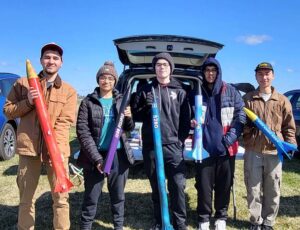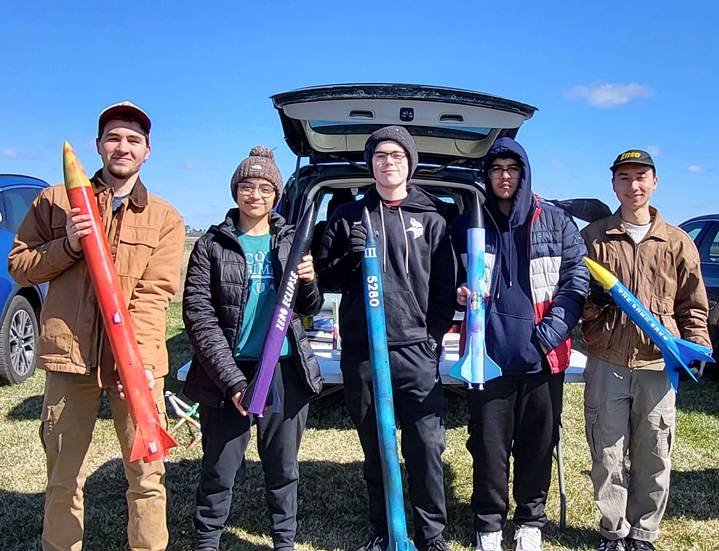 Minnesota Space Grant is hosting both a Rocketry Competition and a Rocketry Challenge on the weekend of May 17-18, 2025.
Minnesota Space Grant is hosting both a Rocketry Competition and a Rocketry Challenge on the weekend of May 17-18, 2025.
Saturday, May 17:
The first day runs from 5 p.m. to 9 p.m. in Akerman Hall at the University of Minnesota (110 SE Union St, Minneapolis), with safety checks and competition team oral presentations to judges
Sunday, May 18: The event’s second day runs from 9 a.m. to 4 p.m. with the rocket fly-off at the Tripoli Minnesota high-power rocketry club launch site just outside of North Branch.
Spectators are welcome.
The Rocketry Competition teams are University of Minnesota Twin Cities, Macalester College, University of St. Thomas, Inver Hills Community College, Bethel University, as well as teams from Iowa, Wisconsin, Tennessee, and one team from overseas.
The Rocketry Challenge teams are Concordia College Moorhead, Normandale Community College, Gustavus Adolphus College, Anoka-Ramsey Community College, Fond du Lac Tribal and Community College, and Augsburg University. (The Rocketry Challenge is for newer, less-experienced student teams.)
“High-Thrust Challenge”
Summary Description
All competition flights will use an AeroTech H550ST-14A (high-thrust) DMS motor.
Student teams will design and construct single-motor, single-stage, high-power rocket(s) and fly twice during the competition. This year the challenges are:
(A) Have the first flight (may be single-deploy or dual-deploy) go to exactly 1,000 feet above ground level on an H550 motor;
(B) Have the second flight (must be dual-deploy) go as high as possible on an H550 motor; and
(C) Have both flights carry a “non-commercial” (i.e. not sold for rocketry) data-logging sensor suite and use it to deduce altitude, speed, and acceleration during ascent, all as a function of time (not just maximum values), in at least three independent ways (barometric pressure, acceleration, gps) at as high a sampling frequency as possible, then analyze the pros and cons of the different approaches.
Bonus points will be given to:
(1) Teams whose member(s) increase their certification level(s) using individually-built rockets (in parallel with the (team-built) competition rocket(s));
(2) Teams that also implement a 2-pressure-sensor pitot tube system as a fourth performance characterization approach;and
(3) Teams that do both flights using a single rocket – internal modifications (parachute, ballast, etc.) are allowed between flights, but not external modifications (to merit bonus points in this category).
All fabrication work on the rocket(s), except for possibly machining of plastic and/or metal parts, must be performed by students.
Read more at this link
Tripoli Minnesota High-Power Rocketry Club Website
